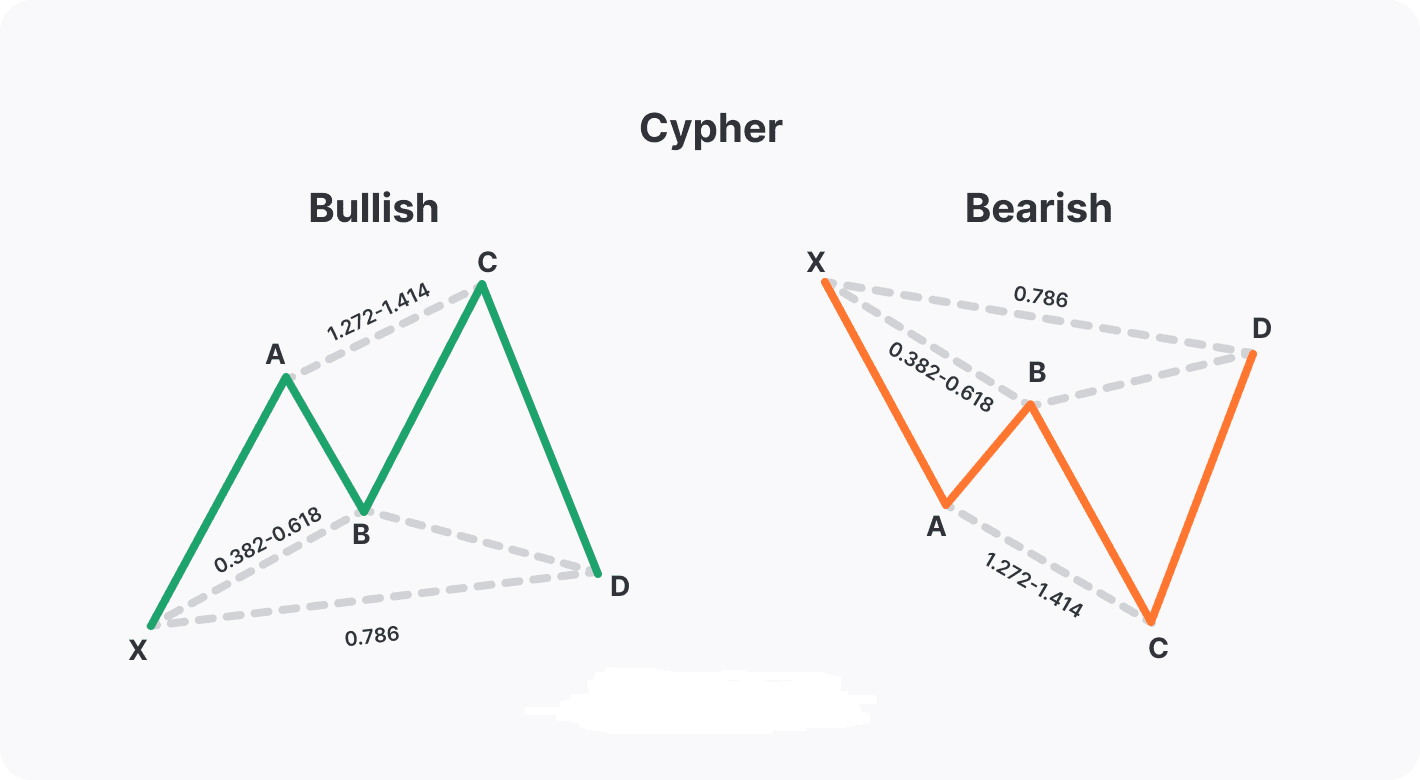Forex trading strategies for using the Harmonic Cypher pattern: Approaches for trading with the Harmonic Cypher pattern.
The world of forex trading is a dynamic landscape where traders constantly seek strategies that can provide them with a competitive edge. One such strategy that has gained prominence over the years is the use of harmonic patterns. Among these patterns, the Harmonic Cypher pattern stands out for its accuracy and potential profitability. In this article, we will delve into the intricacies of the Harmonic Cypher pattern and explore effective approaches for trading with this pattern.
Table Content
I. Understanding the Harmonic Cypher Pattern
II. Approaches for Trading with the Harmonic Cypher Pattern
1. Pattern Identification and Confirmation
2. Entry and Stop-Loss Placement
3. Target Setting and Exit Strategies
4. Multiple Timeframe Analysis
5. Practice and Continuous Learning
III. Footnote
Understanding the Harmonic Cypher Pattern
Harmonic patterns are intricate geometric price formations that provide insights into potential trend reversals or continuations in the forex market. The Harmonic Cypher pattern is a relatively advanced pattern that incorporates Fibonacci retracement and extension levels to identify potential entry and exit points for traders.

The pattern is characterized by four main price points - X, A, B, and C - that follow a specific sequence. The pattern's completion point, D, indicates the potential reversal zone. The Harmonic Cypher pattern is defined by the following key Fibonacci levels:
1. XA retracement: This leg retraces a portion of the initial move from X to A. It typically retraces around 38.2% to 61.8% of the XA leg.
2. AB extension: This leg extends from point A and retraces about 78.6% of the XA leg.
3. BC retracement: This leg retraces around 38.2% to 88.6% of the AB leg.
4. CD extension: This final leg projects from point C and usually terminates at the 161.8% extension of the XA leg.
When these price points align with the specific Fibonacci ratios, a potential Harmonic Cypher pattern emerges, indicating a probable reversal zone at point D. However, it's essential to note that not all patterns will be picture-perfect, so traders must exercise caution and consider additional factors before making trading decisions.
Approaches for Trading with the Harmonic Cypher Pattern
1. Pattern Identification and Confirmation
The first step in trading with the Harmonic Cypher pattern is accurate identification. Traders need to diligently spot the XA, AB, BC, and CD legs to validate the pattern's existence. The better the pattern's alignment with Fibonacci ratios, the higher the probability of success.
Confirmation is crucial before executing trades. Traders often look for additional technical indicators such as oscillators, support and resistance levels, and trend lines to validate the potential reversal at point D. This confirmation step helps filter out false signals and enhances the precision of trading decisions.
2. Entry and Stop-Loss Placement
Once the Harmonic Cypher pattern is identified and confirmed, traders can plan their entries and set appropriate stop-loss levels. Entry is typically around point D, which is the potential reversal zone. However, given the dynamic nature of the forex market, waiting for a small retracement or reversal candlestick pattern before entering can offer better entry points.
Stop-loss orders are vital to manage risk effectively. Placing the stop-loss slightly beyond point X or above point D ensures that if the market moves against the anticipated direction, losses can be minimized. Risk management is paramount, and traders should not risk more than a predetermined percentage of their trading capital on any given trade.
3. Target Setting and Exit Strategies
Determining target levels is another critical aspect of trading with the Harmonic Cypher pattern. Traders often use Fibonacci extensions from the CD leg to project potential profit-taking zones. The 38.2%, 61.8%, and 100% extensions are commonly used as target levels.
However, it's advisable to consider other technical factors when setting targets. If these levels align with historical support and resistance zones or trend lines, they gain more significance. Traders might also consider using a trailing stop to lock in profits as the trade moves in their favor.
4. Multiple Timeframe Analysis
Harmonic Cypher patterns can be more potent when combined with multiple timeframe analysis. While the pattern might be evident on a specific timeframe, checking higher timeframes can provide a broader perspective on the overall trend. Higher timeframe analysis helps traders align their trades with the prevailing market sentiment and increases the probability of successful outcomes.
5. Practice and Continuous Learning
As with any trading strategy, practice and continuous learning are essential for mastering the Harmonic Cypher pattern. Traders should back test their strategies using historical data to gauge the pattern's effectiveness in different market conditions. Additionally, staying updated with the latest market developments, attending webinars, and reading trading literature can enhance a trader's understanding of harmonic patterns and their applications.
Footnote
The Harmonic Cypher pattern is a powerful tool in a forex trader's arsenal when used with precision and caution. This pattern's incorporation of Fibonacci retracement and extension levels provides traders with clear entry and exit points, enabling them to make informed trading decisions. However, it's crucial to remember that no trading strategy is foolproof, and risk management should always be a top priority.
As traders venture into the world of harmonic patterns, especially the Harmonic Cypher pattern, they should take the time to thoroughly understand its mechanics, practice extensively, and adapt their strategies to various market conditions. With careful analysis, proper risk management, and continuous learning, traders can potentially capitalize on the accuracy and profitability that the Harmonic Cypher pattern offers.











Discussion